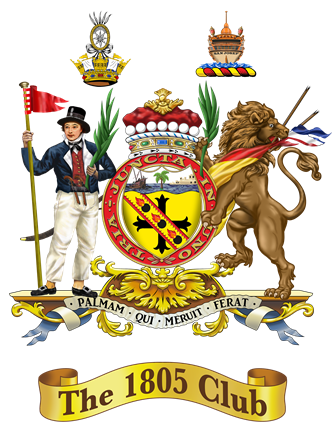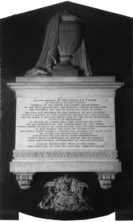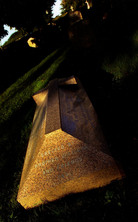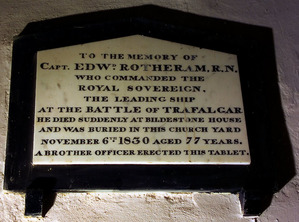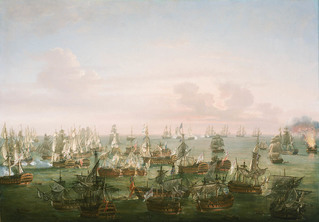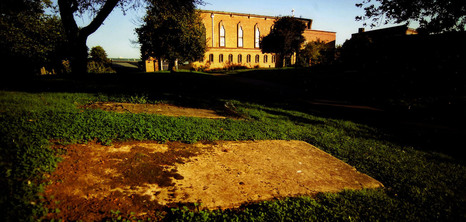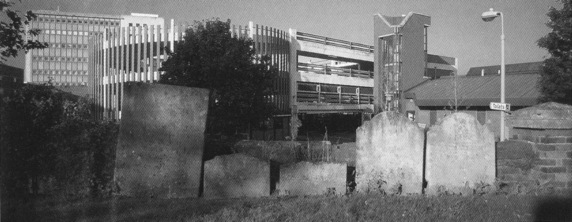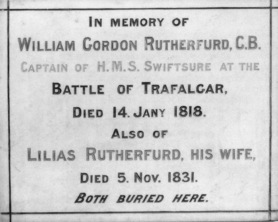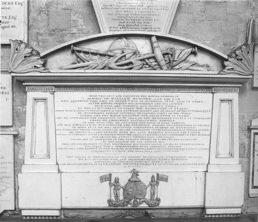The 1805 Club uses cookies to ensure you have the best possible online experience. By continuing to use this site you consent to the use of cookies in accordance with our cookie policy.
10 matches
1-10 of 10 search results
Read More Portrait research and information produced by Mark West
Per Page
The rank and age are as in 1805.
The place of birth is as given in the Muster Books.
Naval General Service clasp
D : discharged
DD: discharged dead
DS: discharged sick
R: run
The first regiment of land soldiers was raised for service at sea in 1664.
In 1690, two Marine Regiments were formed.
In 1755, an Order in Council raised 5,000 marines grouped into 50 Companies of 100 men each.
Companies were administrative units assigned to one of three Divisions at Chatham, Plymouth and Portsmouth.
In 1802, George III designated the Marines Royal.
From 1804, Companies of Artillery (RMA) were formed and attached to the Divisions.
From 1805, a fourth division was quartered at Woolwich.
lists in the Muster Books
V1: volunteers 1st class
B2: boys 2nd class
B3: boys 3rd class
M: military list
MB: military boys list
S: seamen list
SB: ship's boys list
Sup: supernumeraries list
P: prisoners list
The series ADM 107 (passing certificates) has probably made of the National Archives the biggest reposite of fake birth certificates in the world.
To pass their examination for lieutenant, young gentlemen had to proof that they were more than 20 years old.
As they were often 12 or 13 years old when they entered the Service, they were 18 or 19 when they had accomplished the mandatory 6 years of service. Thence the tentation was great to provide a fake certificate of birth, and a shilling sweetener's to the poor curate possibly made the trick.
So, it's important to crosscheck dates of birth or baptism found in ADM 107.
ACHILLES, a third-rate 74 gun ship.
In Vice Admiral Collingwood's lee division at the battle of Trafalgar.
She closely followed the Colossus into the battle.
Her first brief opponent was the Spanish Montanez, 74, and she was then closely engaged for hour with the Argonauta, 80, before the enemy ceased firing and tried to escape but eventually surrendered.
Next the French Achille, 74, engaged her in passing.
She completely subdued the French Berwick, 74, and took possession of her.
She suffered considerable damage to masts and bowsprit.
Rebuilt in 1823.
Sold for £3,600 and broken up in Sheerness.
AFRICA, a third-rate gun ship.
She lost sight of the fleet in the course of the night and at the battle was about 2 miles to the westward of the rest of the windward column, Nelson signalled for her to take her place at the rear of his division.
Instead misunderstanding the signal, Captain Digby bore down on the van of the combined fleet and firing broadsides and receiving the fire of each ship as she passed along them.
This action made a significant contribution to the Battle because it delayed the combined fleet van from rounding to the support of the centre and rear.
When he saw that the Santisima Trinidad had no colours flying, he sent Lieutenant John Smith to take possession. He was greeted by a Spanish officer who informed him that the ship was still fighting but permitted him to return to the Africa.
She then fought with the Intrepide, 74 for about 40 mins before the Orion came to her aid and subdued the French ship.
She had her main topsail yard shot away and her bowsprit and three lower masts badly damaged. Her remaining masts and yards were also damaged with her rigging and sails cut to pieces.
AGAMEMNON, a third-rate 64 gun ship.
She had been Nelson's first "big ship" command and he considered her without exception the finest 64 in the service.
After conspicuous service with Nelson in command she was refitted in Leghorn in 1794/5.
On the morning of 20th October she captured a heavy French merchant ship as a prize and with it in tow nearly ran into the enemy.
She was with Nelson's weather division at the battle.
After dismasting a French 74 she took up a position under the stern of the Santissima Trinidad where she was attacked by four two-deckers.
She suffered damage to her hull that required continuous use of the pumps to keep her afloat.
On 28th Jun 1809 she ran aground on a shoal in Maldonado Bay, at the entrance to the River Plate. One of the anchors broke through the hull and the crew were forced to abandon ship.
AJAX, a third-rate 74 gun ship.
On 21 October 1805, Captain Brown was absent attending the trial of Sir Robert CALDER for his conduct in July and the Ajax was commanded by Lieutenant John Pilford, her first lieutenant.
She was in the weather division under Lord Nelson.
After that the Africa had engaged Intrepide, the Ajax in consort with the Orion caused the Intrepide to strike her colours.
He took the prize in tow but had to abandon her in the gale which followed the battle. She was ultimately destroyed by the Britannia as was the Spanish Argonauta, 80, by the Ajax.
Pilford was promoted directly to Post Captain in December.
On 14th February 1807 off Cape Janissary a fire broke out in the after part of the ship. It spread very quickly and soon the whole ship was enveloped in smoke, so much so that it proved impossible to hoist out the boats.
The flames then burst up through the main hatchway dividing the ship in two. Men jumped overboard but about 250 were lost, many of them survivors of Trafalgar.
On the 15th the ship blew up.
BELLEROPHON a third-rate 74 gun ship-of-the line.
In Vice Ad. COLLINGWOOD's Lee Division at the Battle of Trafalgar. She was nicknamed the "Billy Ruffian" .
The Bellerophon broke through the Spanish line under the stern of the Monarca,74, which she forced to strike to her.She ran on board the French L'Aigle in the smoke. The French ship being much higher and full of troops, the Bellerophon suffered many of casualties from musket fire. She repelled three attempts by L'Aigle to board her.
Captain Cooke was killed by a shot in the right breast while he was reloading his pistols and Lieutenant William Price Cumby took over command.
He fired several broadsides into L'Aigle's stern. The Bellerophon also engaged the Spanish Montañes, the French Swiftsure and the Spanish Bahama.
In the gales after the battle the badly damaged Bellorophon rolled so much that the wounded were suffering as they were thrown around.
A midshipman, Mr Daniel Woodriff, nailed capstan bars along the deck of the captain's cabin to hold the beds until the wounded could be moved to the hospital in Gibraltar.
Captain Edward Rotheram of the Royal Sovereign was appointed Captain.
Became a prison ship at Sheerness in 1815, renamed Captivity and moved to Plymouth in 1824 before being broken up in 1834.
BELLEISLE, a third-rate 74 gun ship.
The Belleisle as second ship in line behind the Royal Sovereign and fired one broadside into the Santa Ana before engaging Le Fougueux.
This action lasted about one hour during which time the Belleisle was fired successively on by L'Indomptable, the Monarca, the San Juan Nepomuceno, L'Achille, L'Aigle, the San Justo, the Leandro and Le Neptune.
The Belleisle was so knocked about that she could not take the surrender of Le Fougueux and this was done by the Temeraire.
Soon the Belleisle's main top mast was shot away and her position became critical as the ships from the enemy's rear came up.
She was rammed amidships by Le Fougeux which appeared out of the smoke and shot away Belleisle's mizzen mast before dropping astern.
Soon the mainmast fell, covering her larboard guns and her foremast and bowsprit were shot away by Le Neptune.
She was rescued by the Polyphemus, the Defiance and the Swiftsure and pulled out of the battle with her hull, masts and rigging shot to pieces.
However the Belleisle did take the surrender of the Argonauta.
She narrowly escaped being wrecked off Trafalgar and Tariffa in the gale which followed the battle and reached Gibraltar with great difficulty.
She was repaired at Plymouth.
BRITANNIA, a first-rate 100 gun ship.
The Britannia was the flagship of Lord Northesk in the weather division.
Although she had been assigned to lead the second division of six ships, because she was one of the oldest and slowest ships, she dropped out of the line and missed much of the battle.
She finally destroyed L'Intrepide after that prize had been cut adrift by the Ajax in the gale after the battle.
She suffered slight damage to her masts and hull.
After Trafalgar Lord Northesk resigned his command due to ill health and Captain Bullen refitted the Britannia at Gibraltar before returning to England with three of the prizes.
The Britannia was put out of commission at Plymouth in June 1806.
Renamed Princess Royal on 6 January 1812.
Renamed St George on 18 January 1812.
Renamed Barfleur in 1819.
Finally broken up in Plymouth in 1826 after 64 years of service.
COLOSSUS, a third-rate 74 gun ship of the line
The Colossus was the sixth ship in Collingwood's lee column.
As she approached she received the fire of several enemy ships.
She engaged the French Swiftsure and the Spanish Bahama and forced both of them to strike.
Captain Morris received a shot in the leg.
The Colossus lost her mizzen mast in the action and had to cut away her main mast during the ensuing night.
She suffered the greatest number of casualties in the British fleet.
The Agamemnon took the Colossus in tow after the battle.
Captain Morris, who had refused to go below, fell faint from loss of blood.
He was landed in his cot at Gibraltar a few days later.
He recovered and continued to command the Colossus.
CONQUEROR, a third-rate 74 gun ship of the line
The Conqueror was in Nelson's weather division and was the fifth to go into action.
She engaged the French flagship Bucentaure, disabling her and forcing her into submission.
A party from the Conqueror went on board and received the sword of Villeneuve. With the Neptune, she then attacked the Santissima Trinidad and she too struck to the Neptune and Conqueror.
They in turn were then attacked by five enemy ships and had to be rescued by other British ships.
She suffered considerable damage.
The figurehead was shot away and the crew were given permission to replace it with one depicting Nelson.
DEFENCE, a third-rate 74 gun ship of the line
The Defence was towards the rear of Collingwood's lee division .
She engaged the French Berwick and then, when that ship hauled off after less than half an hour, opened her broadside on the San Ildefonso which had earlier been attacked by other British ships and compelled her to strike her colours.
With the San Ildefonso, Bahama and Swiftsure, she anchored on the night of 26 October and successfully rode out the gale which wrecked a number of the other prizes.
DEFIANCE, a third-rate 74 gun ship of the line
The Defiance was in Collingwood's lee division.
The Defiance, Revenge and Prince partially engaged the Principe de Asturias before Defiance lashed herself alonside the crippled L'Aigle.
A party led by Lieutenant Thomas Simons boarded her, gained possession of the poop and quarter-deck, and hoisted British colours, but they were soon driven back to their own ship by musket fire which mortally wounded Lieutenant Simons.
The Defiance cut the lashing and sheered off so that she could pour more fire into L'Aigle.
Twenty minutes firing was required before L'Aigle surrendered and a boat from the Defiance took possession of her.
In the gale which followed the battle L'Aigle drifted into Cadiz Bay and was wrecked on the bar of Port Santa Maria on the night of the 25th.
Prison Hulk in 1813.
DREADNOUGHT, a second-rate 98 gun ship of the line
The Dreadnought was the eighth ship in the lee division to enter the action.
She fired on the San Juan Nepomuceno which had been damaged in previous encounters and forced her to surrender.
She also engaged the Principe de Asturias which broke free and escaped to Cadiz.
Hospital ship in 1827
ENTREPRENANTE, a cutter carrying 8 guns
The Entreprenante accompanied the Lee Division under Collingwood.
She took no actual part but with the Pickle and the boats of the Prince George and Swiftsure, she rescued about 200 men from the French L'Achille when she exploded after the battle.
She was sent to Faro with Collingwood's dispatches announcing the victory.
EURYALUS, a frigate (fifth-rate) carrying 36 18 pdr guns.
With the other frigates she kept watch on the harbour mouth of Cadiz in the weeks preceding the battle.
It was the Euryalus who first reported signs of movement in the enemy fleet and when they left port she shadowed them, passing messages back to the fleet via the other frigates.
Stayed close in during the action and towed the Royal Sovereign when she was dismasted.
Collingwood moved then his flag to her.
Captain Blackwood was aboard the Victory when Nelson died.
After the battle, Captain Blackwood was sent under flag of truce into Cadiz to arrange the transfer of wounded prisoners to hospitals there.
Captain Blackwood took part in Nelson's funeral.
Prison Ship in 1826.
Renamed Africa in 1859.
LEVIATHAN, a third-rate 74 gun ship
The Leviathan was the third ship after the Victory in the weather division.
She engaged the Santisima Trinidad, the French Neptune and the San Augustin which surrendered to her.
She was then attacked by L'Intrepide and was rescued by other ships of the fleet.
She suffered considerable damage.
After the battle the San Augustin was set on fire and destroyed.
Convict ship in 1816.
Target in 1846.
MARS, a third-rate 74 gun ship.
The Mars was in the lee column.
She was badly mauled in her approach to the enemy line and was raked by the Fougueux before her own guns could be brought to bear.
Captain Duff was killed early in the battle by a shot that knocked off his head and killed two other seamen near him.
Subsequently she engaged Le Pluton and was fired on by Le Fougueux, the San Juan Nepomuceno, the Monarca and the Algesiras until the Tonnant drew their fire.
MINOTAUR, a third-rate 74 gun ship.
The Minotaur fought at the battle of the Nile on 1 August 1798.
She engaged the ships of Dumanoir's van.
With the Spartiate they managed to "cut out" the Neptuno and force her surrender.
NAIAD, a frigate (fifth-rate) carrying 36 18 pdr guns.
At Trafalgar with the other frigates, the Naiad was 'the eyes of the fleet' reporting the movements of the hostile fleets.
She helped to rescue officers and men from disabled ships and later towed the Belleisle out of action.
Harbour store ship in 1847.
NEPTUNE, a second-rate 98 gun ship.
The Neptune was in the weather column and engaged Le Bucentaure and the Santisima Trinidad.
Later she was fired on by the van division under Dumanoir: Le Formidable, Le Duguay Trouin, Le Mont Blanc, and the Neptuno.
On 22 October she took the Royal Sovereign in tow and later towed the Victory into Gibraltar.
ORION, a third-rate 74 gun ship of the line.
The Orion with the Ajax engaged and caused the surrender of L'IntrÈpide.
Then she engaged the returning van squadron under Dumanoir and assisted in the surrender of the French Swiftsure.
PHOEBE, a frigate (fifth-rate) carrying 36 18 pdr guns.
The Phoebe took part in the blockade of Cadiz.
At Trafalgar with the other frigates she was 'the eyes of the fleet', reporting the movements of the hostile fleets.
After the battle she helped to save the French Swiftsure during gale that blew up on 22 October.
Slop ship in 1826
PICKLE, a cutter of 10 guns.
The Pickle was attached to the Weather Division under Lord Nelson and was a spectator of the battle.
With the Entreprenante and the Swiftsure, she helped in the rescue of two women and about 20O men from the French Achille which caught fire and exploded during the battle.
At the end of the battle she was carrying three times as many prisoners as her crew.
The Pickle brought home to Plymouth Lord Collingwood's dispatches in fourteen days and two days later Laponotiere delivered them to the Admiralty and was immediately promoted commander on 6 November.
POLYPHEMUS, a third-rate 64 gun ship of the line.
The Polyphemus also fought at the battle of Copenhagen.
She was in the lee column at Trafalgar.
She engaged both the French Neptune and the Achille.
After the battle she helped to regain the Argonauta and took the Victory in tow.
Powder Hulk in 1813.
PRINCE, a second-rate 98 gun ship of the line.
The Prince was rebuilt in Portsmouth in 1796.
Halved and lengthened to 194.5 and 2088 tuns.
She engaged both the Principe de Asturias and the French Achille.
The latter caught fire while in action with the Prince and her boats helped to save many of the French crew before the Achille blew up.
REVENGE, a third-rate 74 gun ship of the line.
The Revenge was in the lee column and was first engaged with L'Aigle.
She was then engaged by the Ildefonso, the Principe de Asturias, L'Indomptable and the San Justo until other British ships drove them off.
After the Battle she was refitted at Gibraltar before returning to Portsmouth.
ROYAL SOVEREIGN, a first-rate 100 gun ship.
The Royal Sovereign carried the flag of Vice-Admiral Cuthbert Collingwood and led the Lee column.
She was the first ship to engage the combined fleet.
She passed under the stern of the Santa Ana raking her with port broadside while engaging Le Fougueux with the starboard broadside.
She was locked in battle with the Santa Ana for two hours and during that time was also engaged by Le Fougueux, the San Justo, the San Leandro and L'Indomptable.
The Santa Ana finally surrendered, but the Royal Sovereign was badly damaged especially in the masts and rigging and was taken in tow by the Euryalus.
Collingwood shifted his flag to the Euryalus at 6.00pm on the 21st.
The following day the Neptune took her in tow.
Renamed Captain in 1826.
SIRIUS, a frigate fifth-rate carrying 36 18 pdr guns.
At Trafalgar with the other frigates, the Sirius was 'the eyes of the fleet' reporting the movements of the hostile fleets.
SPARTIATE, a third-rate 74 gun ship.
The Spartiate, a French ship captured at the battle of the Nile, was in Nelson's weather column.
She and the Minotaur, one on each side, poured shot into the Spanish Neptuno, 80, for over an hour.
The enemy ship surrendered at ten minutes past five, but then drifted out of control into the Temeraire which had two prizes lashed to her sides.
Captain Laforey sat in the mourning coach which carried the standard at Nelson's funeral on 9 January 1806.
Sheer Hulk in 1842.
SWIFTSURE, a third-rate 74 gun ship of the line.
The Swiftsure also fought at the Battle of the Nile.
At Trafalgar she was in the lee column and engaged L'Achille until she ceased firing.
L'Achille later blew up.
After the Battle she took the prize, Le Redoutable, in tow until until she was found to be sinkink and cut loose.
The Swiftsure's boats rescued 170 men of the Redoutable's crew.
Receiving ship in 1819.
TEMERAIRE, a second-rate 98 gun ship.
At the battle the Temeraire was directed to take station astern of the Victory.
Because of the damaged state of the latter station keeping was very difficult and the Temeraire suffered from the enemy's heavy raking fire.
She opened fire at the Neptune and the Redoutable losing her mizen-top-mast to the latter.
She hauled up to avoid being raked by the Neptune, and discoved the Redoutable coming out of the smoke and nearly on board her; meanwhile the Neptune wore and opened such a heavy raking fire from her broadside that the Temeraire lost her fore-yard and main-top-mast and her fore-mast and bowsprit were damaged.
Although unmanageable she continued to bombard the Redoutable with her larboard guns killing or wounding more than 200 of her crew as the Frenchman's bowsprit passed over the Temeraire's gangway.
Hand grenades from the French fighting tops set fire to the Temeraire's foresail but this was soon extinguished.
The British crew of 660 was now reduced to about 550 effectives and since these had mostly been sent below by Captain Harvey for shelter from the hand grenades it must have seemed to the Fougueux, approaching on her starboard side, that she was completely disabled.
However, as the French ship approached within 10O yards, the Temeraire's broadside opened and crippled her.
She ran foul of the British ship and was immediately boarded by Lieutenant Thomas Fortescue Kennedy, Mr James Arscott, master, Mr Robert Holgate, midshipman, with 20 seamen and 6 marines.
Within ten minutes the French had been driven off the quarter-deck and Lieutenant Kennedy and his 28 followers had taken complete possession of her.
The main-mast of the Redoutable fell across the afterpart of the Temeraire and formed a bridge onto the French ship and a party under Lieutenant John Wallace went over to take possession.
Many men were lost on board her two prizes in the gale that followed the battle.
Eight feet of her lower deck on the starboard side had been stove in and her masts and rigging badly damaged so she refitted at Gibraltar before returning to England.
Captain Harvey was made a rear admiral and all the lieutenants were promoted to commander.
Prison Ship in 1813.
Receiving Ship in 1820.
THUNDERER, a third-rate 74 gun ship of the line.
The Thunderer was in the lee column at Trafalgar.
She went to the assistance of the Revenge and exchanged fire with the Principe de Asturias, Ildefonso, Indomptable, San Justo and Le Neptune.
TONNANT, a third-rate 80 gun ship (she carried an extra 10 guns).
The Tonnant was in the lee column at Trafalgar.
She came into the fray supporting the Mars and engaged the Algesiras and the Monarca.
The Monarca surrendered, but rehoisted her colours when the Tonnant turned her attention to the Algesiras.
The Algesiras finally surrendered to the Tonnant and was taken possession of.
She also sent a party to take over the San Juan Nepomuceno, but the boat capsized.
The Tonnant, herself, was severely damaged.
VICTORY, a first-rate 100 gun ship.
Hospital Ship at Chatham 1798 - 1800.
Rebuilt in 1801 (2164 tuns).
The Victory carried the flag of Vice-Admiral of the White Lord Horatio Nelson.
She led the Weather column which broke into the Combined fleet line across the stern of the Bucentaure and ahead of the Redoutable firing a double shotted broadside into the stern of the former from a range of a few yards.
At 25 minutes past one Nelson was shot.
The fatal ball entering his left shoulder and lodging in his spine.
He died at half past four.
The Redoutable attemped to board her but the marines and small arms men repelled them and eventually the Redoutable struck only to be lost in the storm that followed.
After the battle she was all but a wreck but was sufficiently repaired in Gibraltar to sail home on the 3rd of November carrying the body of Nelson.
She was paid off in January 1806 for a major refit.
Harbour Service in 1824.
Portsmouth Dry Dock in 1922.
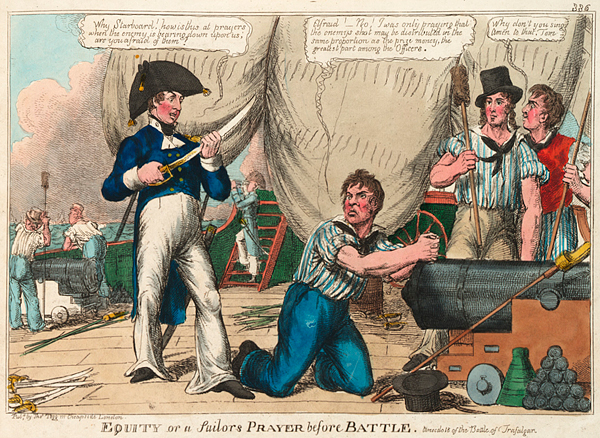
Prize Money
After a battle or the capture of an enemy ship each man on board was entitled to a share of the Prize Money which was based on the nominal value of the ships captured and Head Money which was calculated from the number of men and guns on board the captured ships.
As a great storm blew up after the battle many of the prize ships were lost so the value of the prize money was very low.
The Prize/Head Money was divided into eighths and shared as follows
One eighth to the admiral or the commander-in-chief who signed the ships written orders (unless the orders came directly from the Admiralty, in which case this eighth also went to the captains).
He had to share with the other flag officers.
| Class 1 | two eights | £973 0s 0d | captains |
| Class 2 | one eight | £65 11s 0d | lieutenants RN, masters, surgeons, and Marine captains |
| Class 3 | one eight | £44 4s 6d | principal warrant officers, master"s mates, Marine lieutenants and chaplains |
| Class 4 | one eight | £10 14s 0d | midshipmen, inferior warrant officers, mates of the principal warrant officers, and Marine sergeants |
| Class 5 | two eights | £1 17s 8d | the rest of the men |
Information came from the ledger books of Bankers Christopher Cooke and Wm Cosway held by the Royal Naval Museum, Portsmouth (records for only half the ships survive), together with ADM 238/10 held at the National Archives.

Parliamentary Award
As a great storm blew up after the battle many of the prize ships were lost so the value of the prize money was very low.
Following an outcry about the paucity of the reward after such a significant battle the Government agreed to supplement the prize money with a Parliamentary Award of £300,000.
Like the prize money, the Parliamentary Award was distributed according to the class that in turn was related to the rank/rating of the recipient.
| flag officers | one eight | £18517 13s 0d | Nelson |
| £4629 8s 4d | Nelson | ||
| Class 1 | two eights | £2,389 0s 0d | others |
| Class 2 | one eight | £161 0s 0d | lieutenants RN, masters, surgeons, and Marine captains |
| Class 3 | one eight | £108 12s 0d | principal warrant officers, master"s mates, Marine lieutenants and chaplains |
| Class 4 | one eight | £26 6s 0d | midshipmen, inferior warrant officers, mates of the principal warrant officers, and Marine sergeants |
| Class 5 | two eights | £4 12s 6d | the rest of the men |
The information came from the ledger books of Bankers Christopher Cooke and Wm Cosway held by the Royal Naval Museum, Portsmouth (records for only half the ships survive).
 image courtesy of Bonhams |
Lloyd's Patriotic FundThe Lloyd's Patriotic Fund originated at a meeting of the subscribers to Lloyd's Coffee-house, held on the 20th July, 1803. The object is explained in the third resolution : "That to animate the efforts of our defenders by sea and land, it is expedient to raise by the patriotism of the community at large, a suitable fund for their comfort and relief - for the purpose of assuaging the anguish of their wounds, or palliating in some degree the more weighty misfortune of the loss of limbs - of alleviating the distresses of the widow and orphan - of smoothing the brow of sorrow for the fall of dearest relatives, the props of unhappy indigence or helpless age - and of granting pecuniary rewards, or honourable badges of distinction, for successful exertions of valour or merit." To set an example to the public bodies throughout the United Kingdom, they opened a subscription for the relief of those sufferers and their families who might be injured or sustain loss during the war, when, independently of individual subscriptions, they voted £20,000 from the funds of the House. In a fortnight there was added to this £70,312 7s 0d by individual members, which formed the foundation of the Patriotic Fund. By March 1804, the Fund had received over £174,000. Men, Officers and Marines who were wounded received a sum of money related to their rank/rating and the severity of their wounds:
The relatives of men killed could apply to the fund and received awards related to their rank/rating and the needs of the surviving relatives. The Patriotic Fund Committee was also able to reward those who distinguished themselves with successful exertions of value or merit or their surviving relatives. Consequently the Fund issued 35 swords worth 100 guineas each to commanders and naval captains, 91 swords worth 50 guineas each went to naval lieutenants and Royal Marine captains, and 15 swords worth 30 guineas each, to midshipmen, masters" mates and Royal Marine lieutenants. In addition, it issued 23 swords worth 100 guineas each to 23 naval captains who fought at Trafalgar. The Patriotic Fund still exists today and has assets in excess of £1.7 million. |
Equity or a Sailor's Prayer before Battle
Anecdote of the Battle of Trafalgar

MMS collection
- Why Starboard! how is this at prayers when the enemy is bearing down upon us; are you afraid of them?
- Afraid! - NO! I was only praying that the enemys shot may be distributed in the same proportion as the prize money, the greatest part among the Officers
- Why don"t you sing Amen to that, Tom
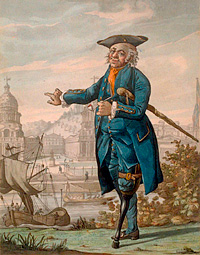
Greenwich Hospital
The Royal Hospital for Seamen at Greenwich, now generally known as Greenwich Hospital was designed by Christopher Wren, and built between 1696 and 1712.
It was funded from a number of sources. Including the proceeds of confiscated lands, unclaimed prize money, wages of men who ran and a regular deduction to the Chatham Chest from seamen, both naval and merchant.
It provided relief and support for seamen serving on Royal Navy ships who by reason of age, wounds or other disabilities were incapable of further service and unable to maintain themselves.
Men could receive help as either in-pensioner or out-pensioners.
While wives and families came in as visitors on occasions, they never lived in the Hospital.
Widows of Royal Navy seamen were employed to work at the hospital or school, and it provided a school for the children of seamen.
On 5 January 1806, Nelson's body lay in state in the Painted Hall before being taken up the river Thames to St Paul's Cathedral for a state funeral.
The Hospital closed in 1869 but the Charity still exists.
Most of the information we include comes from the General Register of Pensioners and their families dated about 1826 [ADM73/42].
There is more material in the Greenwich Hospital records but beyond the scope of this project to extract it all.
Pensions
Widows' Men
For every 100 men two Widows' Men appeared on the muster books.
These fictional men were paid at AB rates , approx £1 8s 0d per lunar month, the money going into a fund to support the widows of officers.
Officers' Pensions
Widows of Commissioned Officers killed in action or dying as a consequence of service were entitled to an Admiralty pension.
Charity for the Payment of Pensions of Widows of Sea Officers
A charity established in the 18th century funded by the deduction of 3d in the £1 from officers' wages. It was restricted to widows left with limited means.
Bounty
The families of ratings killed in action were entitled to a lump sum of one year's wages known as the Royal Bounty payable to widows, dependant children (one third of the annual wages) or mothers (aged over 50).
These were paid by the Navy Pay Office acting for the Admiralty.
Records are found in [TNA ADM 106/3028] onwards and [TNA ADM 30/20].
Chatham Chest
A charitable foundation established in the late 16th century which was funded by taking 6d per month from the wages of all seamen, naval and merchant.
Pensions for permanent disablement or grants to wounded ratings were paid by the Chatham Chest, on production of a certificate known as a smart ticket. The fund came under the management of the Greenwich hospital in 1803.
Men in the Navy paid 1s per month from their wages at this period, 6d to the Chatham Chest, 4d to the Chaplain and 2d to the Surgeon.
We have found records of pensions being paid to men who were wounded [TNA ADM 82].
The pension appears to be related to the severity of the wound and was sometimes for a restricted period and sometimes for life.
Tips on searching the Research Databases
Search across surnames, forenames, ships etc using the main search box, to narrow down your search use the advanced search facility for surname, year and place of birth. The following symbols can help you refine your searches even further:
" " use double quotes to return results containing that exact phrase
* use a wild card to return more matches
+ results should include this word
- results should NOT include this word
The Chairman's Dispatch
Regular updates from The 1805 Club’s Chairman. See the archive.
Admiral Lord Nelson
Visit Admiral Lord Nelson's own blog www.admiralnelson.org.
New Links
AI
Please visit this page
AI – All rights Reserved

